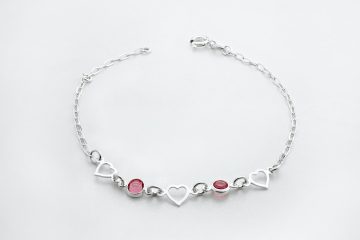Medical alert bracelets have become increasingly popular in recent years, providing individuals with a convenient way to communicate important medical information in case of an emergency. These bracelets are designed to alert first responders and medical professionals to any pre-existing medical conditions, allergies, or medications that the wearer may have, ensuring that they receive the appropriate care when needed. However, one question that often arises is whether a prescription is required to purchase a medical alert bracelet. In this article, we will explore this topic in detail, covering the regulations surrounding medical alert bracelets and discussing the various options available to consumers.
Understanding Medical Alert Bracelets
Before delving into the prescription requirements for medical alert bracelets, it is important to understand what they are and how they function. Medical alert bracelets are wearable devices that typically consist of a band or strap made from various materials, such as metal, silicone, or fabric. They are equipped with a small plate or tag that displays relevant medical information, such as the wearer’s name, emergency contact details, and any important medical conditions or allergies.
The primary purpose of a medical alert bracelet is to provide critical information to medical professionals in case of an emergency. For example, if someone with a severe allergy to a particular medication or food experiences a sudden reaction, the medical alert bracelet can alert first responders to the specific allergen, allowing them to provide the necessary treatments and avoid potential complications.
The Role of Prescriptions in Medical Devices
To determine whether a prescription is required to purchase a medical alert bracelet, it is essential to understand the regulations surrounding the sale of medical devices. In most countries, medical devices are classified into different categories based on their level of risk, with stricter regulations imposed on devices that pose higher risks to patients.
Typically, medical alert bracelets fall into the category of low-risk medical devices. These devices are considered to have minimal risk to the wearer and are not intended to diagnose, treat, or prevent any medical condition. Instead, they serve as a means of communication and identification in emergency situations. As a result, medical alert bracelets are generally available for purchase without a prescription.
Over-the-Counter Medical Alert Bracelets
One of the key factors that make medical alert bracelets accessible to consumers without a prescription is their classification as over-the-counter (OTC) devices. OTC products are those that can be purchased directly by the consumer without the need for a prescription from a healthcare professional. Examples of common OTC products include pain relievers, bandages, and cold medicine.
Medical alert bracelets are typically sold in pharmacies, online stores, and medical supply retailers. They are often available in a variety of styles, sizes, and materials to suit individual preferences. The lack of prescription requirement streamlines the purchasing process for consumers, allowing them to obtain a medical alert bracelet conveniently and quickly.
Customizable Options and Personalization
In addition to the availability of OTC medical alert bracelets, consumers can also choose from a wide range of customizable options. Many manufacturers offer the ability to personalize the information displayed on the bracelet, tailoring it to the wearer’s specific needs. This customization can include adding details such as medical conditions, allergies, medications, and emergency contact information.
By allowing wearers to provide their own information, manufacturers ensure that medical alert bracelets are both accurate and up-to-date. This flexibility also eliminates the need for a prescription, as each individual can include the relevant medical details without the involvement of a healthcare professional. It is important, however, for wearers to regularly review and update the information on their medical alert bracelet to ensure its accuracy in case of an emergency.
Exceptions: Prescription-Required Medical Devices
While most medical alert bracelets can be purchased over-the-counter, there are certain situations where a prescription may be required. Some individuals may have specific medical conditions that necessitate a more advanced or specialized medical alert device. For example, individuals with heart conditions may require a medical alert bracelet with built-in ECG monitoring capabilities.
In these cases, a prescription may be necessary to ensure that the wearer receives the appropriate device that meets their specific medical needs. The prescription will outline the required features and functionality, allowing the wearer to obtain a medical alert bracelet that is tailored to their condition. It is important to consult with a healthcare professional to determine whether a prescription is necessary based on individual circumstances.
Conclusion
In conclusion, medical alert bracelets are generally available for purchase without a prescription. These devices serve as a means of communication and identification in emergency situations, allowing wearers to convey important medical information to first responders and medical professionals. While most medical alert bracelets are classified as low-risk medical devices and can be obtained over-the-counter, there may be situations where a prescription is required for more advanced or specialized devices.
It is important for individuals to carefully consider their specific medical needs and consult with a healthcare professional if they require a prescription for a specialized medical alert bracelet. By understanding the regulations and options surrounding medical alert bracelets, individuals can make informed decisions and ensure that they have a device that best suits their needs in case of an emergency.
FAQs
1. Are medical alert bracelets covered by insurance?
The coverage of medical alert bracelets by insurance varies depending on the policy and the insurance provider. It is advisable to check with your insurance company to determine if they cover the cost of medical alert bracelets or if there are any specific requirements or limitations.
2. Can children wear medical alert bracelets?
Yes, medical alert bracelets are available in sizes suitable for children. These bracelets can be particularly useful for children with medical conditions or allergies, allowing them to communicate important information in case of an emergency.
3. Can medical alert bracelets be worn in water?
Many medical alert bracelets are designed to be waterproof, allowing wearers to keep them on while swimming, showering, or participating in water-based activities. However, it is important to check the specific product’s specifications to ensure its water resistance.
4. Can medical alert bracelets be engraved with multiple medical conditions?
Yes, most medical alert bracelets can be engraved with multiple medical conditions or other important information. Manufacturers often provide options for customization, allowing wearers to include all the necessary details on their bracelet.
5. Can medical alert bracelets be worn alongside other jewelry?
Medical alert bracelets can be worn alongside other jewelry, such as watches or bracelets. However, it is important to ensure that the medical alert bracelet is easily visible and accessible in case of an emergency.




